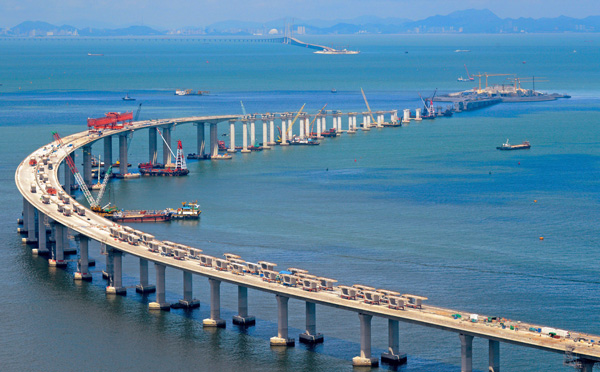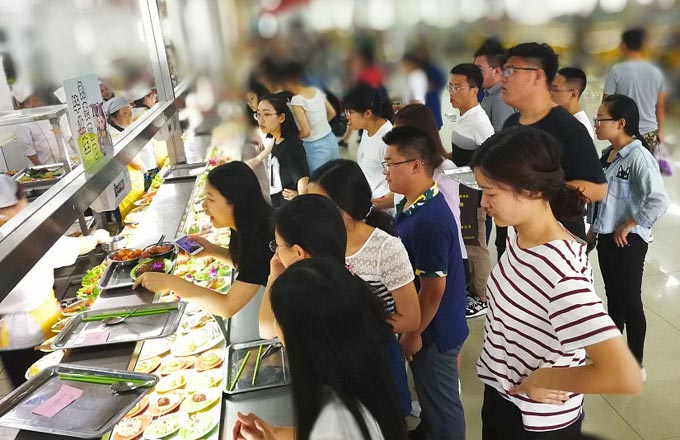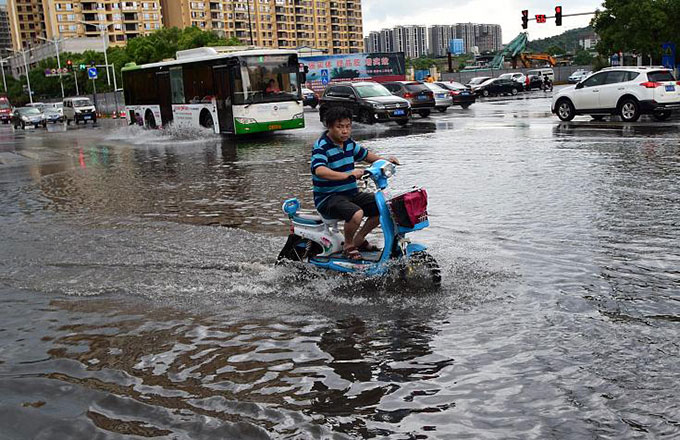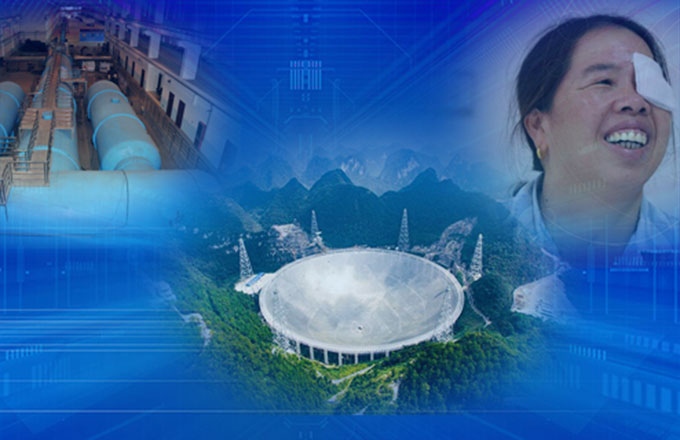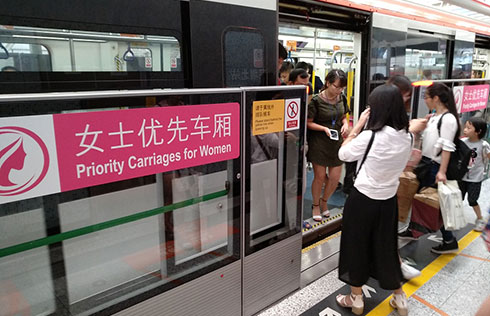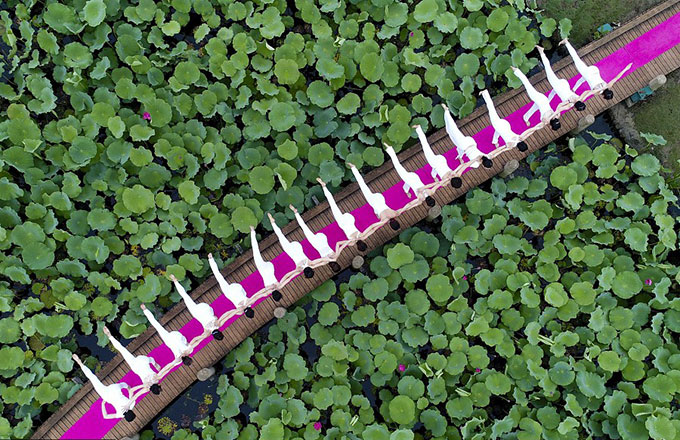Greater Bay Area proposed as driver of development
|
Construction of the 55-kilometer-long Hong Kong-Zhuhai-Macao Bridge is expected to be completed by the end of the year.Photo By Xinhua |
A plan to replicate success of other clusters could promote the emergence of a regional powerhouse, as Luo Weiteng reports from Hong Kong.
A grand plan to create a globally competitive cluster of metropolises in the Pearl River Delta is one of the highlights of the celebrations to mark the 20th anniversary of the return of Chinese sovereignty to Hong Kong.
The move will provide a point of focus for the city, which has long sought to find its place amid the rapid development of the world's second-largest economy, according to experts.
The Guangdong-Hong Kong-Macau Greater Bay Area, poised to replicate the glowing success story of the world's three leading bay areas - in New York, San Francisco and Tokyo - will be developed into an economic powerhouse reminiscent of the country's earlier phase of development.
"The past 20 years have seen growing economic and financial ties between the Chinese mainland and Hong Kong. Yet, that's far from enough," said Cheng Shi, head of research at ICBC International Holdings in Hong Kong. "As the central government has reinforced the theme of high-level, cross-border cooperation this year, Hong Kong cannot afford to miss out on such a historic opportunity."
The concept of the Greater Bay Area was envisioned years ago, but it made its official debut in the Government Work Report delivered in March to the National People's Congress in Beijing.
"After three decades of rapid economic growth, the Chinese mainland has once again put structural economic reform at the top of the agenda, looking to shake up bloated industries and absorb overcapacity in its quest for the next growth engine," said Dominic Wu Sze-yin, chairman of the Asia Financial Risk Think Tank in Hong Kong.
"The Greater Bay Area plan is testing the region's potential to be the next highlight of the country's economy."
As a frontrunner in China's reform and opening-up policy, the Pearl River Delta has long been the showpiece of a greater story unfolding in the mainland.
Last year, the combined GDP of 11 cities in the Greater Bay Area, including Hong Kong, Macao, and Guangzhou, Shenzhen and Zhuhai in Guangdong province, reached $1.4 trillion. The area - which has less than 0.6 percent of China's land and about 5 percent of the population - contributed about 12 percent to the national economy.
Last year, Hong Kong, Guangzhou and Shenzhen, generated combined GDP of $880 billion, making them the three leading metropolises in the area.
Regional cooperation and integration has been underway for years in the bay area. The high-profile move includes the 55-kilometer-long Hong Kong-Zhuhai-Macao Bridge, a six-year megaproject slated to be completed by the end of year, which will reduce the journey time between Hong Kong and the two other cities to 30 minutes from more than three hours.
The bridge falls under the concept of "60-minute transport circles" to link the delta's main cities and facilitate the free flow of capital, human resources, goods and services within the urban cluster.
"The grand plan puts the region on course to benefit from synergies whereby cities will give full play to their competitive edges and focus on developing industries in which they have comparative advantages," Wu said.




